How to Correct Common Running Technique Faults with a Running Assessment
Running is one of the simplest and most effective ways to stay active, but it can also be one of the most injury-prone activities. In fact, up to 90% of runners training for a marathon will experience an injury at some point. Many of these injuries are caused by running technique faults, muscle imbalances, or training errors. Fortunately, a Running Assessment can help you identify and correct these faults, allowing you to run more efficiently and reduce the likelihood of future injuries.
At our physiotherapy clinic, we offer running assessments designed to pinpoint specific technique flaws and biomechanical issues that might be limiting your performance or causing discomfort. In this blog post, we'll explore how running assessments work and how correcting common running technique faults can improve your overall performance and reduce injury risk.
What is a Running Assessment?
A running assessment involves a detailed evaluation of your running mechanics. Using advanced video analysis technology, we assess how you move during your runs, identify faults in your running form, and examine any existing injuries or biomechanical issues. The goal is to address not just the symptoms of pain or discomfort but the root causes of those issues, which often lie in inefficient or faulty technique.
Common Running Technique Faults and How to Correct Them
Overstriding:
Fault: Overstriding occurs when your foot lands too far in front of your body, putting excessive stress on your joints and slowing you down. This technique fault is often linked to heel striking, which can cause knee, hip, and lower back pain.
Correction: A running assessment will help identify if you are overstriding, and the physiotherapist will guide you in adjusting your stride length. By focusing on landing with your foot closer to your body and slightly beneath your hips, you’ll reduce the impact on your joints and improve efficiency.
Poor Posture:
Fault: Many runners tend to lean too far forward or backward while running, which can cause unnecessary strain on the lower back, shoulders, and neck. Poor posture also leads to inefficient running mechanics, making running feel more difficult.
Correction: During the running assessment, we evaluate your posture and offer techniques to help you maintain a neutral spine while running. Simple adjustments, such as keeping your chest lifted, shoulders relaxed, and your gaze forward, can significantly improve your posture and reduce tension.
Inadequate Arm Swing:
Fault: Your arms play an important role in your running mechanics. If your arm swing is too short or too exaggerated, it can lead to inefficiency and imbalance, often resulting in shoulder or neck pain.
Correction: In the running assessment, we evaluate your arm swing and make sure it’s working in harmony with your legs. A proper arm swing should be relaxed and should move forward and backward, not side to side. The goal is to maintain a rhythm that complements your stride and helps propel you forward.
Excessive Vertical Movement:
Fault: When you’re bouncing too much while running, you waste energy by moving up and down rather than forward. This excessive vertical movement can increase fatigue and reduce running efficiency.
Correction: By using video analysis during the running assessment, we can identify if you’re spending too much time in the air. The correction involves focusing on a more horizontal motion, where your energy is directed toward forward propulsion rather than vertical lift. Strengthening your core and glutes will also help you maintain a more stable running form.
Inefficient Foot Strike:
Fault: Foot strike plays a significant role in how much impact is absorbed by your body. Heel striking, in particular, can lead to knee and hip pain due to the high impact forces transmitted through the joints.
Correction: A running assessment will help identify your foot strike pattern, whether it’s a heel strike, midfoot strike, or forefoot strike. By making adjustments to your foot strike and aligning it with your natural gait, we can improve your biomechanics and reduce the risk of injuries like shin splints, Achilles tendinopathy, and plantar fasciitis.
How Does a Running Assessment Work?
Step One – Video Analysis and Injury Assessment:
The first step in a running assessment involves analysing your running technique using high-tech video analysis. This allows us to pinpoint any technique faults and assess how your body moves. We also examine any existing injuries or pain to see how they may be affecting your form.
Step Two – Treatment of Existing Injuries:
If you have any current running injuries (e.g., runner’s knee, Achilles tendonitis, IT band syndrome), we will treat them using a combination of techniques, including massage, dry needling, stretching, joint mobilisation, and specific exercises. We may also collaborate with a podiatrist or running coach if necessary to address any issues related to footwear or training.
Step Three – Tailored Running Program:
After identifying the technique faults and treating any injuries, we’ll devise a personalised running program for you. This program will focus on strengthening your muscles, improving flexibility, and correcting any biomechanical issues. Over time, this will help prevent future injuries and enhance your running performance.
The Benefits of Correcting Running Technique Faults
Improved Running Performance: Correcting technique faults leads to more efficient movement, allowing you to run faster with less energy expenditure.
Reduced Risk of Injury: By addressing faulty running mechanics, you’ll reduce the strain on vulnerable areas like your knees, hips, and lower back, helping to prevent common running injuries.
Increased Endurance and Speed: Proper biomechanics improve your ability to sustain effort over long distances, helping you run longer and faster without fatigue.
Enhanced Comfort: When your running technique is aligned with your body’s natural movement patterns, you’ll experience less pain and discomfort during and after runs.
Conclusion
Correcting common running technique faults can make a world of difference in your running performance and overall health. A running assessment at our physiotherapy clinic helps identify these faults, treats any existing injuries, and provides you with a tailored program to improve your biomechanics. Whether you’re training for a marathon or simply enjoy running for fitness, a running assessment can help you run more efficiently, prevent injuries, and enhance your enjoyment of the sport.
If you’re ready to take your running to the next level or want to address any running-related injuries, contact us today to schedule your running assessment! Let us help you run better and feel stronger.



